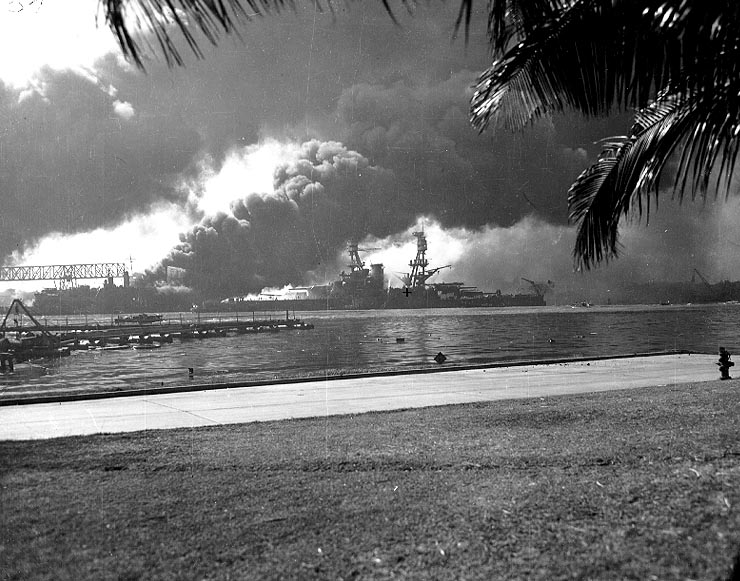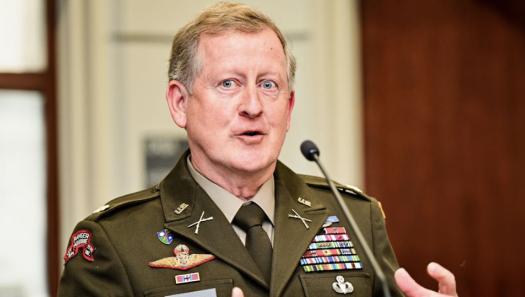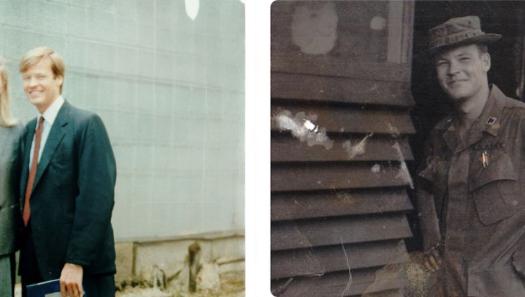Military & Veterans Life
Cover Story: Pearl Harbor Perspective, December 7, 1941
Brig. General (Ret.) Raymond E. Bell, Jr., PhD

U.S. Navy Radioman Joseph J. Ryan remembered December 7, 1941 well. The Sunday promised to be a good one for a game of golf, but it was not to be. Instead, from Ryan’s perspective, along with many other members of the American Armed forces, the day was best characterized by the battle cry “Remember Pearl Harbor.”
Why? Because, as then President Franklin D. Roosevelt addressed the U.S. Congress the next day asking it to declare war on Japan he called it a “Day that will live in Infamy.” The Japanese empire had launched a devastating surprise attack on ships of the U.S. Pacific Fleet and aircraft of both the Navy and Army provoking a response that soon resonated with words from the song “Praise the Lord and Pass the Ammunition.”
Ryan had a front seat when the Japanese attacked in two massive waves. Having joined the Navy barely a year before in New York City, he had gone through sixteen weeks of radio school at San Diego Naval Base when he was assigned to the USS Antares, a non-combatant vessel serving as the flag, or command, ship for the fleet’s oil tankers.
On that fateful day in December the Antares was at sea, but Ryan wasn’t. Instead he had been temporarily detached from the ship and was working on the refurbishing of a small boat called a captain’s gig. He and three fellow sailors had just finished the work the day before the Japanese attack and were awaiting the arrival of their ship on that Sunday. He never served on the ship again but he saw lots of action as the small crew of the gig worked frantically in the lull between the two Japanese air assaults to rescue sailors from the battleship U.S.S. Nevada (pictured above) which was attacked as it sought to leave Pearl Harbor and sail into the open sea. Thus, he gained a first hand perspective of the damage the Japanese torpedo bombs wrought on the ships docked at the naval base.
To this day the controversy swirls around why the U.S. Navy and Army Air Corps suffered such grievous losses. The toll in battleships sunk or badly damaged amounted to eight with other ships also being lost. The U.S.S. Arizona today lays asleep off Ford Island at Pearl Harbor as a memorial to the hundreds of sailors entombed in the ship. Some 2,403 servicemen were killed with the Navy taking the brunt of the losses. 188 planes were destroyed and 159 other damaged. Both the overall commander of the Navy on Hawaii, Admiral Husband E. Kimmel, and the Army, Lieutenant General Walter C. Short, were relieved, their careers destroyed.
Numerous investigations followed but neither flag officer was offered a court martial or military trial. Culpability is still a matter of discussion.
One of the many major arguments concerning the surprise attack and its success is that the American commands were unprepared to repel a Japanese assault. But what is often overlooked is that the Navy and Army were in many instances actually well prepared for combat as they had anticipated it. The Army had two combat infantry divisions stationed in the islands and elements were prepared to fight Japanese marine or army forces trying to come ashore. The Japanese, however, had no intention of invading the Hawaiian Islands. The Army Air Corps was on the alert to deal with saboteurs and prepared to protect its aircraft from insider attack. It had lined up the planes in orderly rows so as to thwart such an attempt. But the preparatory measures, instead, made it easy for the attackers to systematically destroy the grounded aircraft from the air. The Navy’s battleships, primary targets, were prepared to go to sea, having had their fuel bunkers filled and with sufficient ships’ complements present for duty -- as demonstrated by the U.S.S. Nevada -- to allow many ships to be able to get under way.
Ryan was as surprised as everyone else on that fateful day. Before manning the captain’s gig, he was standing dockside chewing on an apple. That did not last long as he shortly gained a grim perspective of the desperate situation in the Pearl Harbor naval base and went into action. It was a perspective he committed to memory and often expressed when in later years he also raised the battle cry “Remember Pearl Harbor.”
Editor’s note: Brig. General (Ret.) Raymond E. Bell, Jr., PhD, is a writer and noted for his breadth of publications that includes more than 300 pieces covering a wide variety of World War II historical events and current military subjects.


